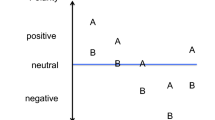Abstract
Most economists and some philosophers distinguish individual utilities from interpersonal social values. Even if challenges to that conceptual distinction can be met, further philosophically interesting questions arise. I pursue three in this paper, using, as context for the discussion, health economics and its attempt to discern empirically a social welfare function to help guide rationing decisions. (1) To discern these utilities and values in a manner that is morally appropriate if they are to influence rationing decisions, who should be queried? To discern individual health state utilities, persons in precisely those states should be asked (generically, “patients”), but for social values, representatives of the general public should be. (2) To discern social values, what should representatives of the public be asked? They should be asked “person trade-off” (PTO) questions that encompass their own self-interest, not PTO questions that focus only on others. (3) What must public representatives understand before they respond to such questions? Despite the philosophically complex problem of patient adaptation, they should understand (among other things) the health state utilities elicited from actual patients with the conditions at issue.
Similar content being viewed by others
Author information
Authors and Affiliations
Rights and permissions
About this article
Cite this article
Nussbaum, M.C. How Should What Economists Call “Social Values” Be Measured?. The Journal of Ethics 3, 249–273 (1999). https://doi.org/10.1023/A:1009829301765
Issue Date:
DOI: https://doi.org/10.1023/A:1009829301765




